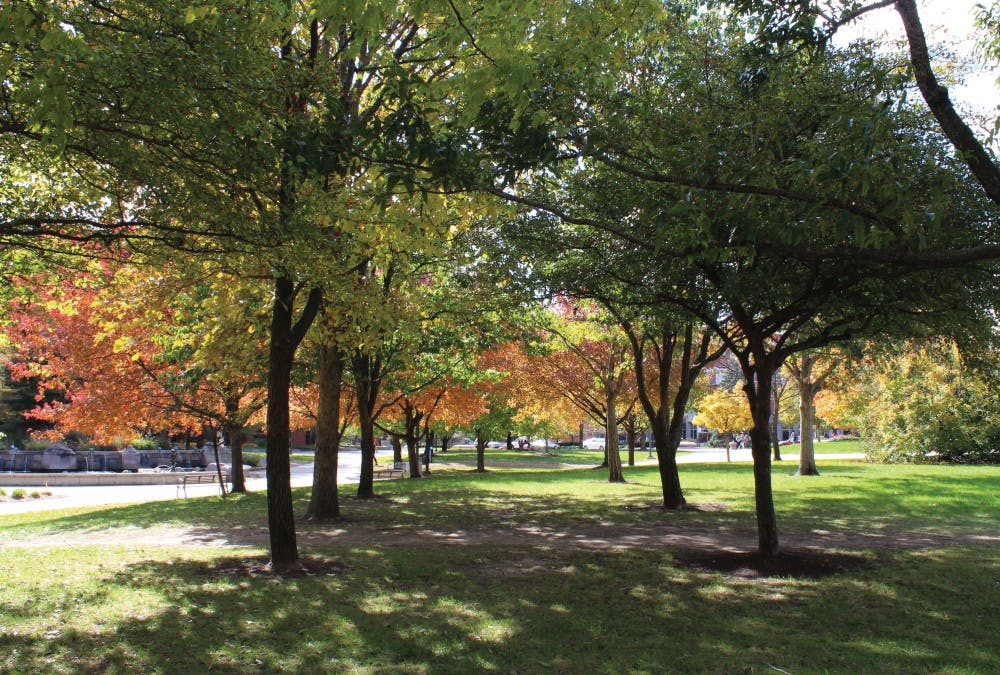Apart from agriculture, water, health, climate and the environment, tourism in Indiana is a sector said to be impacted by climate change.
Purdue University’s Indiana Climate Change Impacts Assessment report states climate change and warmer temperatures will directly and indirectly have an impact on Indiana’s tourism, recreation and hospitality industries.
“We are not projecting that the changes will be drastic. But there will definitely be changes,” said Jonathon Day, associate professor in Purdue University’s school of hospitality and tourism management and co-author of the report. “The Indiana of 2080 looks very very different to the Indiana of today.”
The report states by mid-century, Indiana is projected to lose three to four weeks worth of mild weather per year and the frequency of hot and extremely hot days will increase substantially.
Hotter summers and reduced air quality will contribute to greater health risks for people participating in outdoor activities. Winter recreation, including ice fishing and skiing, will also be negatively affected due to reduced snowfall and increased rainfall, the report states.
The report also states that demand for outdoor recreation and tourism during Indiana’s “shoulder seasons” — the months of March, April, October and November — is expected to rise due to an increase in the number of mild weather days during this season.
“There’s certainly going to be some businesses that will have an advantage from this,” Day said. “To some level, people will be able to do more things. Maybe for some of those businesses, the extreme heat of summer is going to have a dampening impact on their business.”
Jim Mansfield, executive director of Muncie Visitors Bureau, said as far as tourism in Muncie is concerned, he doesn’t foresee that much of a loss or gain from the effects of climate change and the warming trend just expands the time frame for outdoor activities to occur in Muncie.
The report states shifting temperature and rainfall patterns can affect the timing, enjoyment and safety of activities like hiking, camping, bird watching, cycling, outdoor spectator sports and festivals, with lasting effects on traveler perceptions.
It also said the management of these parks and activities is expected to become more difficult, including shifts in habitat suitability for plants and wildlife, increased pressure from invasive species and changed timing of biological events that generate tourism.
“There will be forests in the future but they will be different from the forests that we have now,” Day said. “You’ll still be able to go to Turkey Run, but some of the experiences in some of these places are going to be different.”
Tourism and recreation businesses will increasingly face challenges related to extreme weather conditions with heat stress events and flooding projected to increase, the report states.
“If you get two inches of rain over the course of three days, you’re not going to see that kind of [catastrophe] as opposed to two inches of rain in a single afternoon thunderstorm,” said Petra Zimmermann, associate professor of geography at Ball State. “That’s going to lead to a lot of flash flooding that has tremendous impact.”
Mansfield said while flooding might affect low lying areas like parks and greenways near the White River, an increase in precipitation isn’t going to be detrimental to housing or local activities because flooding isn’t a frequent occurrence in Muncie or Delaware County.
Day said the greatest value for this report is for small businesses involved in the tourism industry. He also said it serves as a good reminder for people to be watchful, up to date and prepared to adapt as things change.
“Most small businesses are pretty good at that,” Day said. “We’re good at adapting. What we’re not good at is bouncing back from a disaster.”
Besides adapting to these changes, being climate friendly by adopting simple practices like watching electricity consumption is something both businesses and consumers can do help reduce our carbon footprint and mitigate the effects of climate change, Day said.
“I think it’d be completely wrong to say, ‘Oh my gosh, this is terrible news for Indiana’s tourism,’” Day said. “It’s just a good reminder that we need to be watching for changes as they happen.”
Indiana Office of Tourism Development’s website states Indiana had 80 million total visitors in 2017 who spent a total of $12.7 billion supporting 199,830 jobs, 5 percent of all Indiana jobs.
Mansfield said that in the past 10 to 11 years, Muncie has doubled the income it generates from tourism, which primarily comes from an innkeeper's tax that is charged to people visiting and staying in local hotels.
“I think tourism in Muncie and Delaware county has continued to prosper to gain some momentum,” Mansfield said. “Everyone’s working together to make a positive image of our tourism efforts and certainly the economic impact on our community has been very good.”
Contact Rohith Rao with comments at rprao@bsu.edu or on Twitter @RaoReports.





